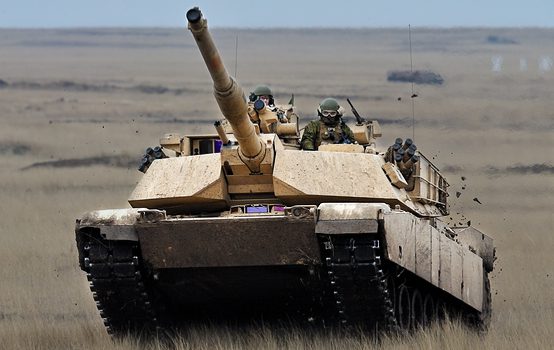The Cost of Failure

An internal Pentagon study found $125 billion that could be saved over a five-year period by eliminating waste and inefficiency, the Washington Post reported last week. But as is now standard operating procedure at the Pentagon, senior leaders dismissed the claims, disparaged those doing the study, and continued pursuing business as usual.
This should not be ignored, because the status quo of wasteful business practices demonstrably weakens our national defense.
For years, service chiefs have sat before Congress and testified that sequestration and reduced defense budgets have compromised their ability to defend the nation. They have claimed that combat forces are at a low state of readiness due to smaller service budgets.
At a speech two years ago at the Center for Strategic and International Studies, Deputy Defense Secretary Robert O. Work said he was “working on our financial auditing statement, so we can prove to Congress and the American people that we know how we’re spending every one of their hard-earned dollars.” He was referring to the document at the center of the Post’s story. But as the Post explains, when the final report revealed massive waste, the Pentagon imposed secrecy restrictions on the data. Furthermore, a “77-page summary report that had been made public was removed from a Pentagon website.”
“There is this meme that we’re some bloated, giant organization,” Work told the Post. “Although there is a little bit of truth in that,” he admitted, “I think it vastly overstates what’s really going on.” Indeed, Work has often claimed that DoD needs more funding.
This behavior has become standard practice in DoD over many years: resist any substantive efforts aimed at reform while demanding the end of sequestration, allowing for larger budgets. Yet as the suppressed report demonstrates, piling billions of dollars on top of an unaccountable, bloated infrastructure will only make it less responsive, not more productive. The Pentagon can’t even account for some of the money it has.
The result of this twin focus has been to weaken America’s ability to conduct combat operations. In a few key categories, this institutional arrogance and disregard for financial responsibility have physically tilted the tactical scales in the favor of our potential enemies.
The U.S. Army has failed for more than two decades to produce a new class of American armored vehicles to replace the 1970s- and ’80s-era Abrams tanks and Bradley infantry fighting vehicles. The defense secretary canceled the Future Combat Systems in 2009, by which point they had already cost more than $20 billion. Numerous programs since have failed to produce a single operational prototype.
The rest of the armed forces have had equally disastrous acquisition failures, as scores more billions have been squandered on canceled programs.
The Russians, however, have not been nearly so ineffective. Moscow now has a whole new family of interconnected armored vehicles, the Armata, in production, featuring the new T-14 tank, which experts claim is competitive with the U.S. Abrams tank. The U.S. Air Force has pushed ahead relentlessly on the development of the F-35 despite that fact it has not completed operational testing and has experienced major shortfalls that may never be resolved. The Chinese, however, have fielded new generations of fighter jets that may pose a serious threat to U.S. aircraft in a future fight.
Instead of maintaining what has been an unchallenged U.S. superiority in the field and in the skies since World War II, we are sinking closer and closer to parity. If trends aren’t checked, we may soon discover that our potential enemies have overtaken us in key battlefield capabilities. As important, our senior military leaders and popular theorists have the unshaken belief that no opponent of the U.S. will ever discover a new class of super-weapon on par with the emergence of the machine gun, the submarine, or the jet fighter. Such attitudes gamble with America’s national security.
There are highly educated and creative minds in Russia, in China, and elsewhere. We deceive ourselves if we continue to believe that no adversary will ever discover the next disruptive technology at our expense. It is not beyond the realm of possibility that such a discovery could leave us staggering on a future battlefield, desperately struggling to absorb a blow we don’t know how to parry.
Tinkering around the edges won’t accomplish reform within the DoD. Playing musical chairs among officials vested in the system won’t result in positive change. Substantial reform will require the elevation of new leaders.
This group must be empowered and supported by the president. It should be led by key visionary leaders, young women and men who are not tied to the old ways and whose minds are alert and open to discovering new methods and capabilities. It should also include some experienced DoD civilian and uniformed leaders, as well as business leaders who know how to manage the development of technology and handle large bureaucratic organizations.
Keeping the DoD machine of the past 20 years in place will virtually ensure that the current dismal state of affairs will continue into the foreseeable future. Without reform, our qualitative edge in the world will continue to crumble, and one day the nation’s military may not be able to safeguard our citizens when a crisis arises.
Daniel L. Davis served multiple tours in Afghanistan with the U.S. Army and works as a fellow and military analyst for Defense Priorities.
Comments